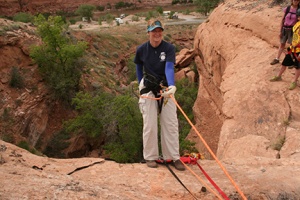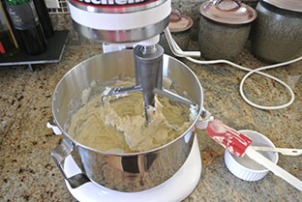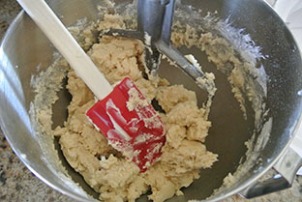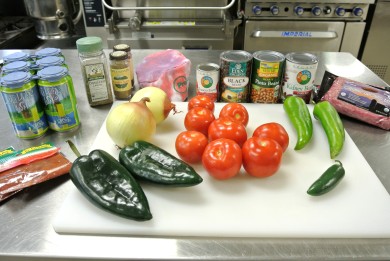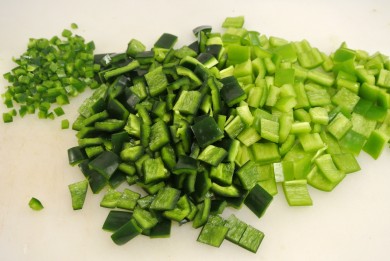For even more photos, visit photographer Kent Pettit’s website.
Congratulations to all of the Edwards students for finishing a fantastic summer semester! We’d like to recognize those students who made the Dean’s List and the President’s Honor’s List for the Summer 2014 semester.
The President’s Honor’s List (GPA 4.0+):
Jessica M. Wyss
Robert A. Vallevona
Gina M. Meagher
Steven R. Lundblad
Noel W. Skoog
Aaron J. Duarte
Sara B. Blodgett
Megan M. Romero
Andrea C. Sanchez
Terence F. Mahoney
Linda M. Sneath
MacKenzie A. Cooker
Petya Petrova
Michael F. Vivirito
Ken S. Kanowitz
Merced Ponce
Danielle L. Blattel
Benjamin M. Lysdahl
Angelo Davis
Karen Parra
Michael G. Ramunno
Morgan M. Felton
Stefan R. Kuhn
Joanna C. Bartley
James F. Gabriel
Olivia Bertolotti
Katherine B. McGoodwin
Andrea K. Saborowski
Miss Nancy Andresen
Ms. Cameron J. Martin
Jeremy D. Rogers
Jennifer M. Crabtree
Belem L. Villalovos
Patricia Parks
Melanie A. McKinney
Margaret A. Gauthier
Ivan Istomin
Phillip M. Miller
Margarita K. Arevalo
Flor A. Cruz
The Dean’s List (GPA 3.5 – 3.99):
Maria Kosteski
Taylor M. Preston
Casey Miller
Courtney E. Schmidt
Brittany A. Baker
Michael A. Wagner
Susy M. Dozier
Crystal B. Montano
John Metz
Kelsey L. Williams
Karen Tejeda
Modesto Sanchez
Karina Reyes
Hannah Goldberg
Angela Haskins
Juan C. Baca
Giselle E. Azcona
Octavio Chavez
Lhakpa T. Sherpa
Luis C. Holguin
Roberto C. Cortez
Steven M. Fellman
Isabel E. Kadlecik
Cristal Corral-Macias
Cory D. Drake
Brenda Perez-Ordonez
Alison L. Tice
Ernesto Arrieta
Renata K. Marshall
Luis Arevalo
Karen A. Hudson
Elizabeth Velasco
Congratulations to all of our amazing students who made the Dean’s List and the President’s Honors List for the Spring 2014 semester!
President’s Honor’s List (GPA 4.0+) – Spring 2014
Nathan P. Asoian
Tanya D. Barnicoat
Morgan Bethke
Zhanetta Betuganova
Jen G. Bishop
Danielle L. Blattel
Ryan Bush
Jenica D. Butts
Greta K. Byrne
Aaron G. Childers
Amanda L. Clinkenbeard
Luke Cobb
Randel Q. Cohen
Jennifer M. Crabtree
Nicole A. Daigle
Chad Elliott
Celia B. Franklin
Hannah Goldberg
Alexander B. Hall
Terry E. Harland
Tim S. Harmon
Jacob N. Harris
Aliaksandr Hulevich
Kristen A. Humphries
Leslie D. Juliano
Jeanne L. Landreth
Marharyta Latyshevich
Sandy L. Loera
Benjamin M. Lysdahl
Melanie A. McKinney
Phillip M. Miller
Josue G. Morales
Kim L. Nock
Sean D. O’Brien
Petya Petrova
Aaron C. Resnick
Cherie L. Rollins
Kristen W. Rush
Anthony W. Salomon
Joseph B. Sanders
Vaneza G. Serna
Chadley J. Simms
Sabrina Ste-Marie
Belem L. Villalovos
Michael F. Vivirito
Michael A. Wagner
Naomi R. Warner
Jessica M. Wyss
Kevin Zaiontz
Dean’s List (GPA 3.5 – 3.99) – Spring 2014
Reimy F. Abreu
Yazmin Almanza
Nancy Z. Aqqad
Juan C. Baca
Brittany A. Baker
Octavio Chavez
Jay T. Cline, Jr.
MacKenzie A. Cooker
Aaron J. Duarte
Lois E. Edwins-Kempton
Pennie K. Gile
Maria M. Guardian
Paul M. Hogan
Ken S. Kanowitz
Gabriel M. Kossman
Maria Kosteski
Maggie I. Lewensten
Lana L. Makina
Luke A. Martin
Michael Morales
Karent G. Moran
Daniel W. Murdough
Evelyn A. Najera
Ginger Oviatt
Karen Parra
Craig G. Poulin
Thomas A. Reyes
Isabella Rivas
Andrea K. Saborowski
Alex R. Saenz
Modesto Sanchez
Trevor Shapiro
Mingma T. Sherpa
Noel W. Skoog
Linda M. Sneath
Lyndsey A. Stafford
Bianca G. Torselli-Zamora
Caitlin C. Turi
Eric W. Waters
John K. Widerman
By Aaron Childers
Colorado Mountain College had its first annual Sustainability Conference at our Steamboat Springs campus on April 17th & 18th. The turnout was spectacular! There were students, community members, staff and faculty, all of whom are playing a part in efforts to further CMC’s Sustainability program. I was lucky enough to attend and want to share some of my experiences.
The Steamboat campus itself is a great example of modern mountain architecture. The style allows it to blend well with its environment. The sleek look also fits in with CMC’s pursuit of advancement. The main academic building, situated on a hilltop, affords amazing views of the town. The south facing wall is almost all glass, allowing one to observe Steamboat’s ski hill. OK, enough of that…Let’s get to the most important thing: the food.
The food was a foodie’s dream. The meals offered lit up my taste buds. My palate and the food became taste bros. The vegetables were locally grown. Wow, I could feel the nutrients permeating every fiber of my body. Did I mention they were all fresh and organic? The beef and pork were free-range from a local ranch. Given where the animals lived, I can safely assume that they had had a good life. The students and staff that planned the meals made sure that if they couldn’t get a local product, the product they did acquire came from a good source. Even the pancake syrup was organic. What’s important about eating local is that first off: the health benefits should trump all else. Knowing local growers allow a community to know what those growers do or do not put into the soil. The produce travels less so the carbon footprint is reduced. And let’s not forget the economics, man! Keeping dollars local means that the money spent benefits the area where one lives. It all adds up to a healthy community.
Our guest speaker was Dr. Stephen Mulkey. Dr. Mulkey, President of Unity College, internationally recognized scientist and education leader in environment and climate change, shared lots of very useful information with CMC. The road ahead for CMC’s sustainability program isn’t going to be easy. It may be noble, but it will not be easy. The student film series was very informative. For instance, did you know that bees allow us to have the variety of fruits, nuts and veggies we all enjoy? Because of bee pollination, our food palate is as diverse as our community! But due to mysterious factors, could be pesticides or herbicides, our bee population is dying off at an alarming rate. If you enjoy things like almonds and avocados; save the bees! I couldn’t attend all of the lectures, but the ones I did attend were very engaging. Walking Mountains Science Center has a wonderful internship that offers students the opportunity to experience hands-on training in reducing our waste. The center also boasts a wealth of knowledge about our unique Colorado climate and the things that make our mountain communities function. If you’re interested in getting involved with the Walking Mountains Science Center, please contact Kim Langmaid at (970)-827-9725.
The poster series was also a success. There were a lot of well thought out research projects that covered topics ranging from microwave usage on food, to community gardens. Hopefully the research projects will be made public for all to enjoy.
My main take away was…If you didn’t make it this year, well, there’s always next year!
There is little more valuable than taking classroom learning into the real world. The Paramedic class recently spent three days in Moab for a learning lab literally in the field.
“This is a great opportunity to get out of the classroom, learn some skills, have a bit of fun, and spend time with their families,” said Liz Owen, full-time faculty for the paramedic program.
The Moab trip is just one of several field learning experiences students in the paramedic program experience during the course of the program.
The Edwards campus is the anchor for the CMC Paramedic program. The program provides specific training for those interested in attaining the highest level of certification for a pre-hospital worker.
For information on the Paramedic program, click here.
Howdy fellow foodies, foodists and just pIain food eaters!
I am Heather Weems. Welcome to my recipe blog, designed to bring sustainable awareness to everyday foods. First, I feel a need to justify why you should allow any space in your brain for my rants and views regarding food. Here are my credentials: I have been eating “food” (I’ll explain the “…” later) for over 42 years and have gotten pretty good at it. I am a semi-practicing chef, married to a practicing chef and working with an educational program devoted to food. I have brushed elbows with many a food organization and many a famous chef. I have even stepped up to coach a local ProStart cooking team that actually won their state competition. I also paid an exorbitant amount of money to get a culinary degree at a school that cannot be named. (After I already had a bachelor’s degree in something else, of course.)So basically, in this one small area, I have a pretty good chance of getting things right. Second, this blog is about food, food sourcing, food customs and habits. We all eat, we all obsess 200 times a day about our food choices and we all have opinions. (Hint: most of food is opinion so don’t stress that you’ve got things wrong.) So, just like the best way to enjoy food is to share it, the best way to enjoy this blog is to share in it–Read. Eat. Chat. Repeat.
Post One: Dispelling the Myths of Sustainability
What do you think of when I say; “Hello, my name is Heather and I have devoted the last several years to connecting students to sustainability in cooking.” I think yoga mats—then Subway bread (same ingredients), cute little farms, plastic cups with eco printed on the side and steaming pots of various concoctions. What you might not think of is smelly diesel trucks packed with chemical fertilizer driving over monocrop fields being over-watered by depleting natural aquifers. You might not picture the chemical compounds of herbicides and pesticides and wonder how they react within your body. You also might not realize that paying less for non-organic produce is not usually a lasting bargain. In a nut shell (I love food puns), sustainability is complicated. Trying to fix one problem often creates another. Access to truly sustainable food is tricky. And what was thought to be a good choice today often proves to have devastating consequences tomorrow. Alas, enough doom and gloom for now—its killing my appetite. Let’s move on to a recipe!
I might need to justify my recipe writing style so you can follow along. Except for baking recipes, all ingredients are subject to substitution, brands available in your area and your taste preferences. Recipes are guidelines, not tight ropes.
Beer, Bean and Pepper Chili
Why this recipe: Not too pricey, one pot method, freezer compatible, and it has beer in it.
2 lbs ground beef or ground chicken/turkey or ground meat substitute
2 ea yellow onion—medium dice
4-5 ea garlic clove—peeled and chopped
2 ea anaheim chile—medium dice
1-2 ea poblano chile—medium dice
1-2 ea serrano chile or jalapeño
12 oz locally-made beer—dark or light, but not too hoppy
1 ea tomatoes (28 oz. can—peeled and diced)
1 ea 6 oz. can tomato paste
2 cups beef, chicken or vegetable broth
1 ea canned black beans (15 oz. can—top liquid drained)
1 ea canned pinto beans (15 oz. can—top liquid drained)
1 ea canned kidney beans (15 oz. can—top liquid drained)
3-5 Tbsp chili powder (your choice—Fernandez brand has good flavor)
2 Tbsp paprika
1 tsp dried oregano
1 tsp ground cumin
2 ea bay leaf
To taste Salt and Pepper
- Brown and drain ground beef.
- In the same pot, sweat garlic and onions over medium flame for a few minutes (until the sharp aroma comes off of the pot). Add chiles and cook 5-10 min. or until tender. Add meat back in and cook on med.-high flame for another 5-10 minutes.
- Deglaze pot with beer and then add tomatoes, tomato paste, broth and three types of beans (drain the liquid that sits on top of the beans off).
- Let the chili come to a simmer then reduce flame to medium-low. Now it is time to dial in the “heat”. Add 2 Tbsp. chile powder and the paprika, then taste. Add more chile powder if necessary. Remember that the heat will intensify as the chili cooks—and then will intensify again after the chili ages for a day or two. Add the oregano, cumin and bay leaf and let simmer for at least an hour, adding liquid when needed. Check for S&P and serve with your favorite accompaniments.
If you are opposed to cans, cook up some dried beans and use those instead. Same for the tomatoes, just concasse some fresh ones. I have found fresh oregano a little weird and prefer dried. Also, instead of any meat, you can try adding dry lentils. They’ll cook just fine with the other ingredients. If you like a lot of body in your chili, add about a cup of pumpkin puree. It will give it a more stew-like quality. And lastly, mind your sources when you shop for ingredients.
Jill Paradis has been working with top Colorado restaurants for more than 15 years, starting out as a program coordinator for Share Our Strength, where she provided cooking classes and volunteer chefs to underserved communities. A sommelier and cheese aficionado, Jill divides her time between Colorado and Piedmont, Italy, where she lives on a five-acre farm in the small hilltop village of Maretto d’Asti with her husband, Giulio, and their dogs, Bella and Yampa, who occasionally find truffles! She also makes wine, grows hazelnuts, and runs the Monferrato Farm, an experiential learning place where language skills and creative culinary training come together.
In 2004, Jill created Culinary Translations, a consultancy that provides food safety training to some of Colorado’s best eateries. She has been teaching classes in the Colorado resort communities ever since. Jill attended Colorado Mountain College from 1996-1998 at the Spring Valley and Vail Campuses. Jill holds her alma mater in high regard and has fond memories of the excellent, dedicated instructors, and the opportunities to enjoy the beautiful rocky mountain lifestyle. While at CMC, Jill participated in the Friendship City Exchange to Nicaragua, and it had a profound effect on her.
Jill is currently an instructor for Colorado Mountain College, where she teaches ServSafe® and Employee Food Safety Training in Spanish and English annually at the Edwards campus. The next round of classes is set for January 2014.
When she is not teaching or working on the farm, Jill helps her family with a philanthropic project in Haiti. www.help-haiti.net. They have several on-going projects in the town of Fond des Blanc, about an hour outside of Port au Prince. They are currently shipping two containers full of agricultural supplies and non-electrical (treadle) sewing machines to start a sewing co-op for the women in the village and to increase the agricultural production of the area that will create jobs and provide fresh food for the villagers. The group also hopes to install solar energy in the village.
A few hard-fought games of Rummy 500, a cozy cabin and laughing with friends. Sounds like a pretty good weekend, right? Add in three miles skied, 1,000 vertical feet climbed and a whole lot of information about snow conditions and avalanche danger, safely traveling in the backcountry, how to plan a backcountry adventure, and you have the makings for a classic Colorado Mountain College class: Intro to Backcountry for Women.
Six women set off this winter to a hut located on Fremont Pass, outside of Leadville, hoping to increase their confidence venturing to the backcountry. They learned about basic travel, equipment, trip planning and avalanche hazard awareness.
“They wanted to learn enough to make good decisions on their own – not rely on others to decide for them,” said guide/instructor Krista Hildebrandt. “The group ended up having to use some of their new skills on the route back out.”
The class is just one of many Outdoor Studies classes offered by Colorado Mountain College in Edwards. Instructional Chair J.C. Norling believes that the location of the campus makes it an ideal place to learn how to safely live the mountain lifestyle – whether that’s venturing to the backcountry in the winter, navigating rapids in a kayak in the summer, learning to scale mountains with rock climbing techniques, or learning how to plan a summer backpacking trip.
Some of the classes coming up this summer include: Orienteering, Mountain Orientation and Trip, Beginning Kayaking, Rock Climbing I and II and Golf. Be sure to register early for these popular classes! Just go to http://www.coloradomtn.edu/register to search for Outdoor Studies classes and register.
CMC and BMHS instructors teach high school students culinary skills
By Stefanie Kilts
Can your teenager cook carré d’agneau dans sa croûte aux amandes, pommes de terre Anna, chou frisé aux pommes et fenouil and demi-glace aux cerises? Or in layman’s terms, almond crusted rack of lamb, potatoes Anna, kale with apple and fennel, and a cherry demi-glace?
Try cooking that — in addition to mushroom crepes with crème fraîche in a pinot noir reduction and a chocolate cake with orange cardamom and pistachio truffle — with just two butane burners, an eight-foot-long table and one hour of time. That’s the culinary task ahead for Battle Mountain High School students heading to the ProStart state culinary competition in Denver on March 1.
“They’ve practiced that meal over and over again,” said Heather Weems, a culinary assistant for Colorado Mountain College’s Culinary Institute, who has teamed up with BMHS to teach high school students culinary skills for the past two years.
The ProStart culinary team, led by Weems and Sharon Wible, an instructor at BMHS, is composed of five students selected from the ProStart program, a two-year program for high school juniors and seniors interested in the restaurant and food service industries.
The students will prepare two three-course meals for the competition, one for judges and one to be put on display. The entries will be judged on safety, sanitation, teamwork, cooking skills, food prep and even costing items in the recipe, Weems said. If the students’ cooking skills and presentation are ranked highest at the state level, they will move on to the national competition.
Getting a jump on a culinary career
The ProStart program is overseen by the National Restaurant Association Educational Foundation. Students who complete the program’s requirements receive a ProStart National Certificate of Achievement, putting them in the running for scholarships for colleges across the nation. In addition, students are eligible for credits through CMC’s culinary arts program, and can get a head start on courses in food safety and production.
“If you think you want to be a chef, this is a great way to get experience,” Weems said. “It’s a way to share the passion of food and let students know about alternate paths to a culinary profession, if they decide they want to pursue that.”
The instructors hold auditions for the team every year and any student who is enrolled in the ProStart program at BMHS can try out, Weems said. The students are asked to prepare omelets for the audition and judged on the same criteria as the state competition.
Once the team is formed, they begin to plan their three-course meal for the competition. Using resources from the CMC culinary library, this year’s students decided on a French-themed meal.
Wible, who has been a ProStart instructor for more than 10 years, said the program has been highly successful at the high school. The culinary team has won the state competition seven times in the past 10 years and captured the national title in 2007.
“The program keeps growing every year,” she said. “It’s a great way to expose them to a higher level of cooking and to what CMC’s Culinary Institute has to offer.”
Shared kitchen multiplies resources, strengthens partnership
This isn’t the first time the college’s Culinary Institute and BMHS have partnered up. In the fall of 2009, they jointly opened a brand new teaching kitchen at the high school, located conveniently across the street from CMC’s campus in Edwards.
The teaching kitchen has been instrumental in local culinary education. High school students, including those in the ProStart program, use it during the day and college students and community members occupy it during evenings, weekends and school breaks.
In the final weeks before the competition, the BMHS ProStart team is taking advantage of the space and using every opportunity they have to practice their French cooking skills.
“The teams that win really give it their all every day and really invest in it,” Weems said. She added that when the instructors asked the students if they wanted to practice more, they didn’t hesitate to add an extra day of practice to their weekly schedule.





















